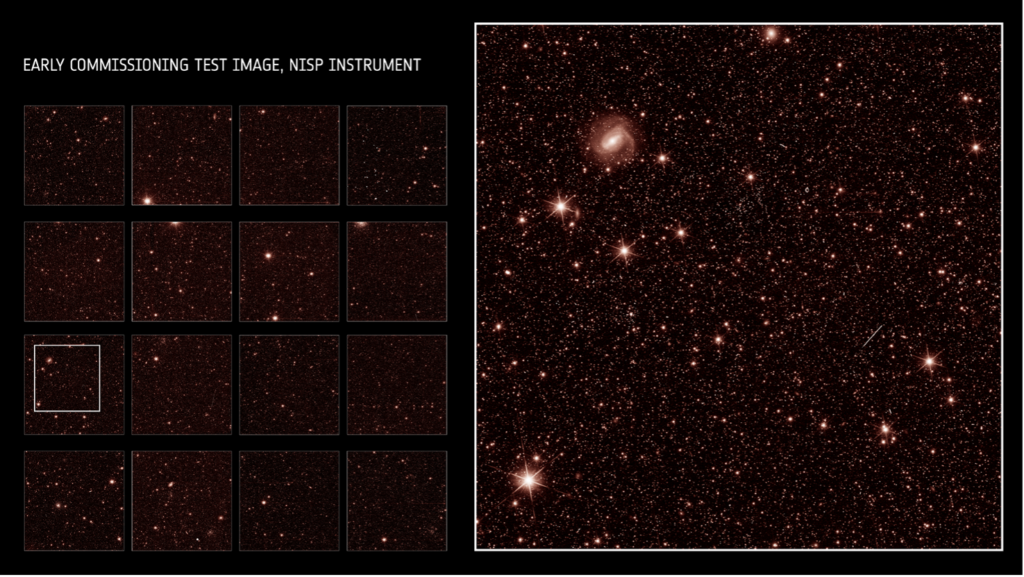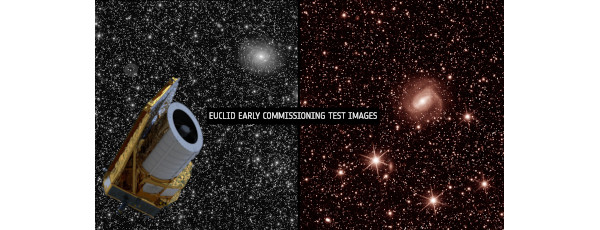The satellite lifted off from Cape Canaveral on July 1, 2023 and reached its destination orbit a few days ago at 1.5 million km from our planet capturing the first test images.

Euclid is an ESA scientific project in which Italy partecipates through the Italian Space Agency (ASI), the National Institute of Astrophysics (INAF) and the National Institute of Nuclear Physics (INFN).
The group of the INFN Division of Bologna started together with that of Padua the INFN participation in the mission in 2015.
The satellite is equipped with a 1.2 m reflecting telescope and two scientific instruments: the VISible instrument, (VIS) and the Near-Infrared Spectrometer and Photometer, (NISP). They are designed to provide very sharp images of the extragalactic sky and perform near-infrared spectroscopy of millions of galaxies. Euclid’s overarching scientific goal is to reach a detailed understanding of dark matter and dark energy, invisible components that make up 95% of the composition of the universe, and to provide decisive measurements also in sectors in which INFN has always been involved, such as neutrino physics, complementary in this area to the research carried out in laboratories.
Researchers and technicians of the Bologna Section and of CNAF, coordinated by Gabriele Sirri, contributed to the integration, testing and validation of the warm electronics of the NISP instrument, to the functional tests of the flight software, to the test campaign at the LAM laboratory (Marseille), and provided support for in-flight commissioning.
The Bologna group, which includes researchers from the INFN Division, CNAF, DIFA and INAF-OASBO, is ready to exploit scientific data with the main objective of focusing on the study of the properties of neutrinos and dark energy.
The first snapshots are still early test images, taken to check the instruments and review how the spacecraft can be further tweaked and refined. These are raw, largely unprocessed images, some unwanted artefacts remain – for example the cosmic rays that shoot straight across.
The image above was acquired by the NISP instrument sensitive to near infrared frequencies (900-2000 nm) with an exposure of about 2 minutes.
ESA story: Euclid test images tease of riches to come


